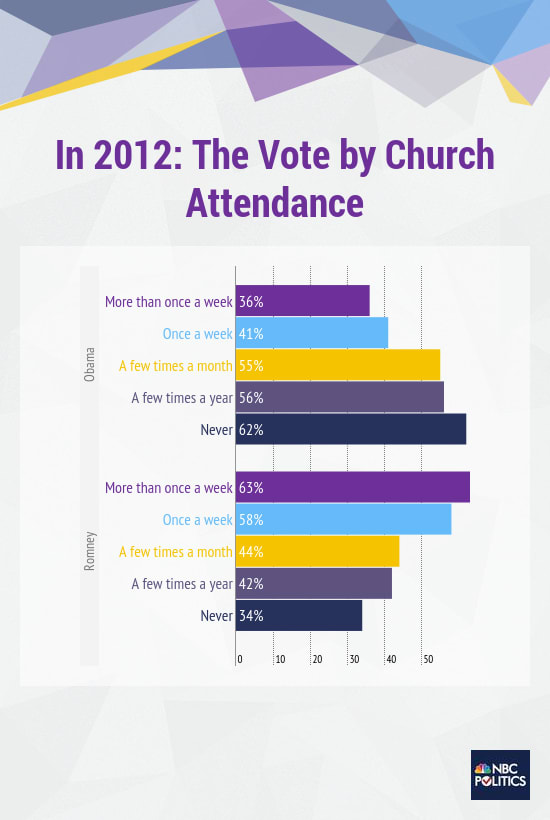A November 20 post provided some
historical perspective on the 2012 popular vote for president. At the time, however, more than a million ballots were outstanding. Now, all states and the District of Columbia have
certified the final results:
- Obama: 65,899,557 (51.06%)
- Romney: 60,931,959 (47.21%)
The table below ranks winners since 1896 by
share of popular vote. The preliminary data placed him 20th of 30, but his percentage increased slightly as the final votes came in, so now he ranks
18th of 30.
|
1
|
1964
|
Lyndon B. Johnson
|
61.05%
|
|
2
|
1936
|
Franklin D. Roosevelt
|
60.80%
|
|
3
|
1972
|
Richard Nixon
|
60.67%
|
|
4
|
1920
|
Warren G. Harding
|
60.32%
|
|
5
|
1984
|
Ronald Reagan
|
58.77%
|
|
6
|
1928
|
Herbert Hoover
|
58.21%
|
|
7
|
1932
|
Franklin D. Roosevelt
|
57.41%
|
|
8
|
1956
|
Dwight D. Eisenhower
|
57.37%
|
|
9
|
1904
|
Theodore Roosevelt
|
56.42%
|
|
10
|
1952
|
Dwight D. Eisenhower
|
55.18%
|
|
11
|
1940
|
Franklin D. Roosevelt
|
54.74%
|
|
12
|
1924
|
Calvin Coolidge
|
54.04%
|
|
13
|
1944
|
Franklin D. Roosevelt
|
53.39%
|
|
14
|
1988
|
George H.W. Bush
|
53.37%
|
|
15
|
2008
|
Barack Obama
|
52.87%
|
|
16
|
1900
|
William McKinley
|
51.64%
|
|
17
|
1908
|
William H. Taft
|
51.57%
|
|
18
|
2012
|
Barack Obama
|
51.06%
|
|
19
|
1896
|
William McKinley
|
51.02%
|
|
20
|
1980
|
Ronald Reagan
|
50.75%
|
|
21
|
2004
|
George W. Bush
|
50.73%
|
|
22
|
1976
|
Jimmy Carter
|
50.08%
|
|
23
|
1960
|
John F. Kennedy
|
49.72%
|
|
24
|
1948
|
Harry S. Truman
|
49.55%
|
|
25
|
1916
|
Woodrow Wilson
|
49.24%
|
|
26
|
1996
|
Bill Clinton
|
49.23%
|
|
27
|
2000
|
George W. Bush
|
47.87%
|
|
28
|
1968
|
Richard Nixon
|
43.42%
|
|
29
|
1992
|
Bill Clinton
|
43.01%
|
|
30
|
1912
|
Woodrow Wilson
|
41.84%
|
There is a problem with this method of ranking, however. In some elections, a third-party candidate took a large share of the vote, so the winner's percentage may look artificially small. In 1992 and 1996, for instance, Bill Clinton won clearly even though
H. Ross Perot kept his share below 50 percent. So perhaps a better way of ranking is to look at the winning candidate's
popular vote margin. Just as in the preliminary count, President Obama's 2012 margin ranks
24th of 30.
1
|
1920
|
Warren G. Harding
|
26.17%
|
2
|
1924
|
Calvin Coolidge
|
25.22%
|
3
|
1936
|
Franklin D. Roosevelt
|
24.26%
|
4
|
1972
|
Richard Nixon
|
23.15%
|
5
|
1964
|
Lyndon B. Johnson
|
22.58%
|
6
|
1904
|
Theodore Roosevelt
|
18.83%
|
7
|
1984
|
Ronald Reagan
|
18.21%
|
8
|
1932
|
Franklin D. Roosevelt
|
17.76%
|
9
|
1928
|
Herbert Hoover
|
17.41%
|
10
|
1956
|
Dwight D. Eisenhower
|
15.40%
|
11
|
1912
|
Woodrow Wilson
|
14.44%
|
12
|
1952
|
Dwight D. Eisenhower
|
10.85%
|
13
|
1940
|
Franklin D. Roosevelt
|
9.96%
|
14
|
1980
|
Ronald Reagan
|
9.74%
|
15
|
1908
|
William H. Taft
|
8.53%
|
16
|
1996
|
Bill Clinton
|
8.51%
|
17
|
1988
|
George H.W. Bush
|
7.72%
|
18
|
1944
|
Franklin D. Roosevelt
|
7.50%
|
19
|
2008
|
Barack Obama
|
7.27%
|
20
|
1900
|
William McKinley
|
6.12%
|
21
|
1992
|
Bill Clinton
|
5.56%
|
22
|
1948
|
Harry S. Truman
|
4.48%
|
23
|
1896
|
William McKinley
|
4.31%
|
24
|
2012
|
Barack Obama
|
3.85%
|
25
|
1916
|
Woodrow Wilson
|
3.12%
|
26
|
2004
|
George W. Bush
|
2.46%
|
27
|
1976
|
Jimmy Carter
|
2.06%
|
28
|
1968
|
Richard Nixon
|
0.70%
|
29
|
1960
|
John F. Kennedy
|
0.17%
|
30
|
2000
|
George W. Bush
|
-0.51%
|
